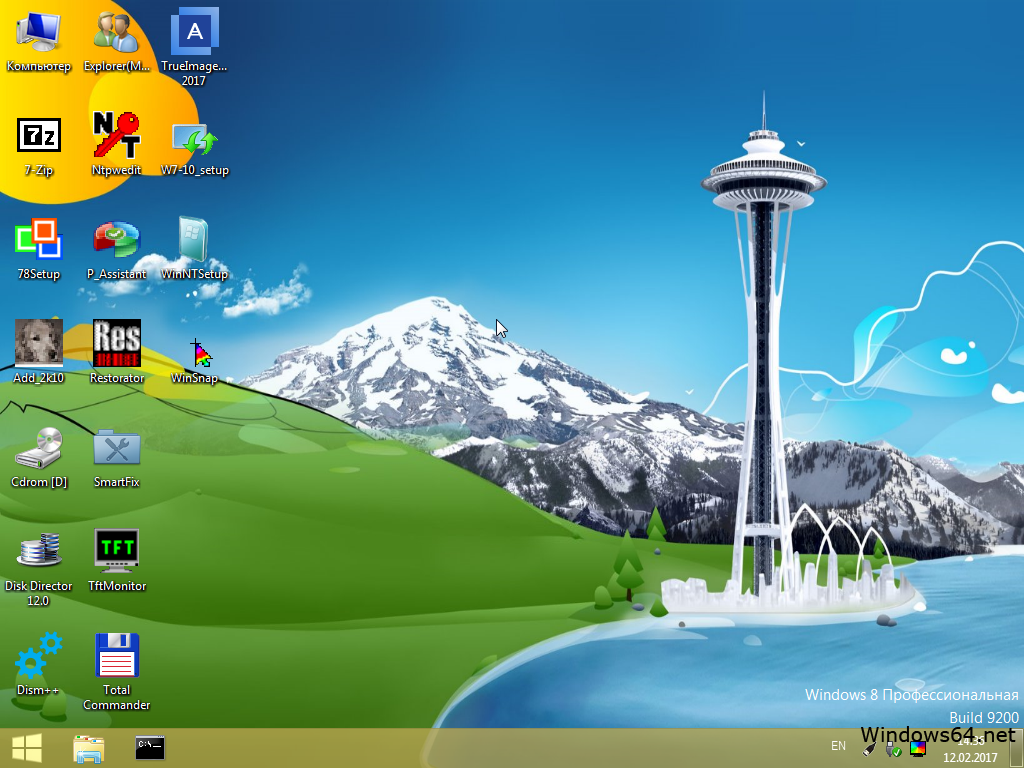

- #WINDOWS10 PE ISO PATITION INSTALL#
- #WINDOWS10 PE ISO PATITION PRO#
- #WINDOWS10 PE ISO PATITION CODE#
But when I tried to convert it to a new VM by VMware vCenter Converter Standalone, I got this error: "FAILED: Unable to find the system volume, reconfiguration is not possible".Ĭonverting a shutting down system from physical hard drive to a VM is not officially supported by VMware vCenter Converter Standalone. Then I created a customized VM by selecting this VMDK image file. V2V converter can successfully convert it to a VMDK image. My physical machine can boot from this VHD file, so it's not a broken image.) I just tried your procedure using a VHD disk image. Thanks much for the detailed information! In PowerShell, the "Get-WmiObject Win32_DiskDrive" and "Get-WmiObject Win32_LogicalDisk" commands also work, but not the Storage Cmdlets Get-Disk, Get-Partition, Get-Volume, which all return a null output report. In WinPE, dos commands and diskpart work fine with SCSI disks. On both WinPE 5.x and WinPE 10, the only Storage Cmdlet that works is Get-PhysicalDisk. I recently updated to WinPE 10 and PowerShell 5, but still no joy. I was originally using WinPE 5.x with PowerShell 4.
#WINDOWS10 PE ISO PATITION PRO#
The VM images with SCSI disks works fine, on both XP Pro and POSReady 2009 however, when I boot to WinPE the PowerShell Storage Cmdlets do not see the virtual SCSI disk, partitions, volumes, etc. Some new hardware platforms must be built as VMware images using virtual SCSI disks, instead of IDE, as was always used previously. I have built multiple iterations over the past 2 years w/o any issues.
#WINDOWS10 PE ISO PATITION CODE#
Note #3: the USB device needed to be pre-formatted and assigned a drive letter before you run the command.I am using Workstation 12 Pro to develop WinPE 10 code for OS deployment/provisioning. Note #2: use switch /iso if you want to create an ISO image of the WinPE. The data on the other partition will be safe and untouched. If you have multiple partitions on the device, only the data on the drive specified in the command will ba lost. Note #1: the command will re-formats the drive, meaning that all data on the USB device will be lost, so back up your data first before doing this. Plug in the USB drive that you want to build the bootable WinPE, and run MakeWinPEMedia command. Such as, create an x86 copy of WinPE in winpe_x86 folder under z:\desktop\temp. Option 2 – navigate to Start → Windows Kits under W category → right-click Deployment and Imaging Tool → More → Run as Administrator.Ĭreate a working copy of the Windows PE files on your local computer, specify the platform: copype Option 1 – search “ Deployment and Imaging” in the Start menu, right-click the result and choose Run as administrator. Then, launch Deployment and Imaging Tools Environment in an elevated command prompt window.
#WINDOWS10 PE ISO PATITION INSTALL#
And that’s when I discovered the process of making a Windows 10-based WinPE USB Bootable Drive is so much easier.įirst of all, download and install Windows ADK on your computer and make sure Windows Assessment and Deployment Kit is selected during the installation. Instead of troubleshooting to fix it, I decided to get a more recent version of WinPE. I can still boot into the WinPE environment but the keyboard and mouse stopped working there, and that made this bootable WinPE disk completely useless. For some reason, a Windows 7-based WinPE bootable USB drive I built years ago stopped working on the new desktops I purchased recently.


 0 kommentar(er)
0 kommentar(er)
